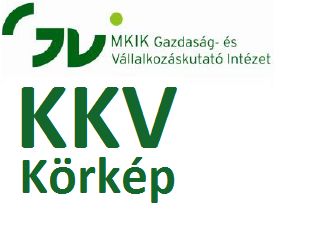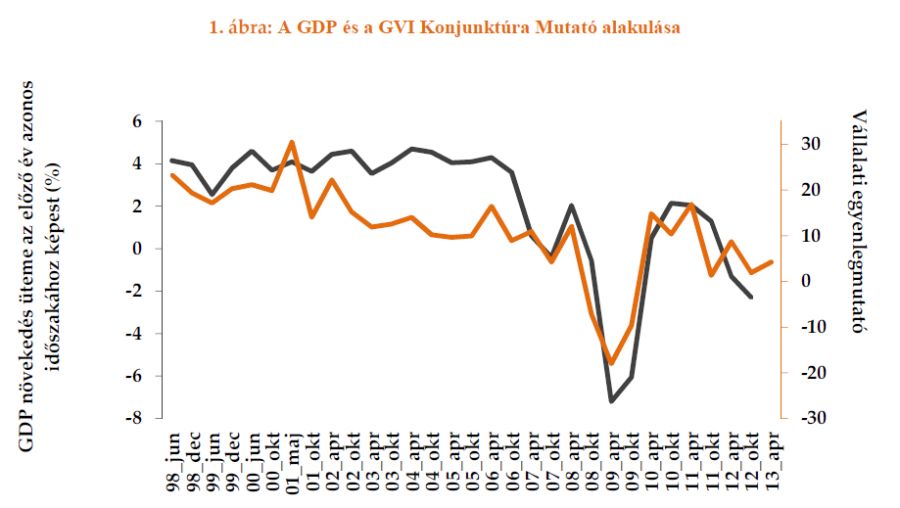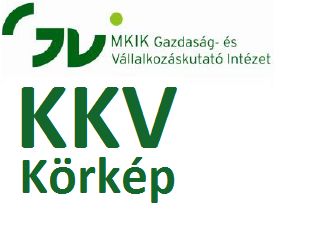- Research fields
- Further Research Areas
- Research year
- Related documents
The objective of the latest of research of IEER was to get survey-based information on the intentions of high school students for higher education and how these intentions change by various high school and student traits. The survey was carried out by a brief self-administered questionnaire at a sample of secondary schools selected on the basis of several criteria. Nevertheless the sample design could not be proportional by some important features (e.g., high schools' ranking by admission rates, geographic location, or student composition). During the selection process high schools were classified into two groups based on admission rates - elite and non-elite high schools - and in addition to high schools from Budapest, several from rural areas were included as well. On the following link an English summary of the paper can be downloaded.
Read more >>>The objective of the latest research of IEER was to get survey-based information on the intentions of high school students for higher education and how these intentions change by various high school and student traits. The survey was carried out by a brief self-administered questionnaire at a sample of secondary schools selected on the basis of several criteria. Nevertheless the sample design could not be proportional by some important features (e.g., high schools' ranking by admission rates, geographic location, or student composition). During the selection process high schools were classified into two groups based on admission rates - elite and non-elite high schools - and in addition to high schools from Budapest, several from rural areas were included as well.
The study took place from 23 April to 26 June 2013, using a quota method on the basis of high school rankings. Students from six selected Budapest and rural institutions completed a questionnaire on paper or online - answering questions by computer or smart phone. Our results are based on the responses of 592 high school students.
Read more >>>In 2012 wage regulation changed in a number of ways. The changes affected 74 percent of workers; these changes, however, differed significantly depending on sector. Eighty percent of companies with between 5 and 50 employees implemented the expected wage increases. Of these, 93 percent compensated all their employees - in other words, all those affected by changes in the regulatory environment. The IEER's latest analysis examines how the increased burden due to the changes in the regulatory environment affected the employment situation of small businesses. According to the analysis, jobs would have been lost and the employment rate would have declined if the expected wage increases were compulsory and not linked to salary compensation. Due to the nature of the expected wage increase (non-compulsory) and the institution of wage compensation, however, this did not happen; at the same time, although the expected wage increases, which were partially neutralized by the institution of wage compensation, did not lead to job losses, it did make it more difficult to create new jobs.
Read more >>>According to preliminary statistics data released by the Central Statistics Office (CSO, or KSH in Hungarian), seasonally and calendar-adjusted gross domestic product fell by 0.3% in the first quarter of 2013 compared to the same period last year, but compared to the previous quarter a 0.7% increase was observed.
Indicators pertaining to the current situation of small and medium-sized enterprises (SMEs) showed a consistent picture for the first quarter of 2013. Compared to the previous quarter, current situation indicators had all increased slightly. Expectations for the next year don't reflect this optimism, however; particularly evident is the sharp decline in expected investment activity.
The overall effect of these contradictory results has led the SME Business Climate Index to idle after experiencing a strong rise during the previous survey; although the value is still rising, it's at a much slower rate than in the previous quarter. The Uncertainty Index declined somewhat; in other words, a decline can be seen in the diversity of opinions of SME assessments toward their current and expected business situations.
The share of small and medium-sized enterprises with bank loans has been steadily declining since October 2011; its current value is at 62%. In terms of loan type, it can be stated that firms are still mostly indebted in HUF. The proportion of business loans in Euros and Swiss francs has declined significantly since April 2012, and currently represents 25% and 1.1% respectively of all SME loans.
During the past half year 17% of the businesses surveyed inquired at a bank about the possibility of borrowing money, which is a rate two percentage points lower than in April 2012.
On the following link an English summary of the paper can be downloaded.
Read more >>>April 2013 was the thirty-first occasion of the HCCI Institute for Economic and Enterprise Research (IEER) business climate survey which is based on the cumulative response of more than 14,000 companies and conducted in April and October of each year, with the participation of regional chambers. It is the largest and most extensive business climate survey of its kind in Hungary. The research is part of the 14 million enterprise-wide Eurochambres survey of the European economy. In April this year 3,500 firms filled out our questionnaire -- our study is based on these responses.
The IEER business climate index rose 2.3 points from the October level of 1.9 points, and now stands at 4.2 points. This is still characterized as a weak positive result, which is underscored when the data is compared to the level in April of each year: this is the second lowest level since the start of the study (1998). The value of the uncertainty index is at the 43.6-point level. This suggests that within the business community there is still no clear or unanimous opinion of current trends. In addition, together with data available on the current performance of the Hungarian economy and the IEER business climate data, our attention is drawn to the slight decrease in uncertainty surrounding the current year.
Read more >>>The latest analysis from IEER looks at unreported income and explores their spatial variations using mathematical and statistical tools. This assessment measured sub-regional income and consumption data from 2010. The results estimate that unreported income represents 17.3% of total - both reported and unreported - income. The estimated unreported income was adjusted to a constant value so that at the national level the rate of unreported income is 18%.
In terms of regional differences it can be established that the proportion of income from the hidden economy is lower than average in high-income areas and those areas where the local economy and labour market are based on a few large companies. Most significant is the proportion of unreported income in areas where income corresponds to the regional average or slightly below. Another important finding is that only a quarter of small regions have an unreported income rate of less than 18%, whilst half of the country's population live in these areas.
April 2013 was the thirty-first occasion of the HCCI Institute for Economic and Enterprise Research (IEER) business climate survey which is based on the cumulative response of more than 14,000 companies and conducted in April and October of each year, with the participation of regional chambers. It is the largest and most extensive business climate survey of its kind in Hungary. The research is part of the 14 million enterprise-wide Eurochambres survey of the European economy. In April this year 3,500 firms filled out our questionnaire -- our study is based on these responses.
The IEER business climate index rose 2.3 points from the October level of 1.9 points, and now stands at 4.2 points. This is still characterized as a weak positive result, which is underscored when the data is compared to the level in April of each year: this is the second lowest level since the start of the study (1998). The value of the uncertainty index is at the 43.6-point level. This suggests that within the business community there is still no clear or unanimous opinion of current trends. In addition, together with data available on the current performance of the Hungarian economy and the IEER business climate data, our attention is drawn to the slight decrease in uncertainty surrounding the current year
On the following link an English summary of the paper can be downloaded.
Read more >>>January 2013 was the thirteenth occasion of the quarterly business climate survey of the Institute for Economic and Enterprise Research (IEER). For this study, a total of 400 companies are followed every quarter that are representative of the economic performance and sector distribution of firms operating in Hungary. A survey of changes in ten different business climate indicators related to the business situation and prospects of firms are analyzed and summarized in the format of the IEER Business Climate Index.
The latest results reveal a more favourable economic condition compared to the previous quarter. The IEER quarterly Business Climate Index increased significantly; following a low point from the previous quarter, it jumped to a level last measured in the second quarter of 2011. For both the current business situation of enterprises and short-term expectations positive changes uniformly took place in late 2012: in the following half-year all indicators had risen sharply. In terms of expected changes in staff numbers, optimism hitherto never before seen in the history of the survey was reported. After high growth in indicators for expected investment activity, those representing intensification of investments entered positive territory. The value for the uncertainty index compared to the previous quarter slightly decreased, indicating a decrease in the diversity of opinions on views toward the current and expected business situation of enterprises.
Read more >>>The results of the January 2013 IEER SME Outlook business climate survey reveal more favourable economic conditions compared to the previous quarter. The SME Outlook Business Climate Index (BCI) increased from -6.6 to 5.4 percentage points, which is the highest value since July 2011. Regarding the Uncertainty Index stagnation can be observed, which means that there is no change in the perception of the SMEs about their current and expected business situation. The Uncertainty Index is at a current level of 41 percentage points, which is almost the same as the value measured in the preceding quarter (it was 42 percentage points in October 2013).
Read more >>>The following analysis was prepared within the framework of a joint quarterly research project entitled "SME Perspectives", involving the HCCI Institute for Economic and Enterprise Research (IEER) and Volksbank. For the survey a sample of about 300 small and medium enterprises with similar structures and elements were used.
In our analysis we try to find out to what extent does the perception of corruption affect satisfaction with the institutional environment, and what kind of corruption experiences have the greatest effect on this satisfaction. First, we present the company managers' perceptual changes towards corruption and also how their satisfaction with the institutional environment has evolved during the period from 2005 to 2010. Then, we search the variables that affect the development of this satisfaction. Our analysis shows that the higher the degree of corruption, the more negatively managers regard the institutional environment. Among the different corruption experiences cited, what makes managers significantly dissatisfied is, firstly, when they feel that their company has to pay bribes in order to get anywhere economically and, secondly, whether they consider corruption to be a major problem or not. Research of corruption is partly based on perception. Our analysis shows that subjective opinions are still relevant in the sense that much depends on personal experiences with corruption.
Read more >>>




